#incorrect taxonomy
Explore tagged Tumblr posts
Note
In that case, it's still bad for you, but it is pretty great for the slugs!
Are slugs bugs?
a bug is a little critter that lives in ur heart. sure
#slugs#arthropods#maybe#bugs#incorrect taxonomy#unsanitary#with all due respect to slugs i hope we always eat different lettuce
2K notes
·
View notes
Text
Finding my theriotypes on the Tree of Life page in Randall Munroe's book Thing Explainer

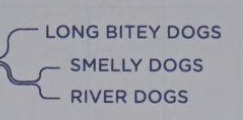

#thoughts#therian#alterhuman#the musteloid taxonomy is incorrect... oh well#I'm a long bitey dog now
10 notes
·
View notes
Note
I'm only familiar with a few PBTA titles, so I'm curious. What is "correct" usage of the terms hard and soft move, and what are some incorrect definitions you've come across?
(With reference to this post here.)
You're right to put "correct" in quotation marks, because I have to preface this with the observation that taxonomies aren't "correct" or "incorrect"; they're merely useful or not useful. I'm going to be talking about utility here, not correctness per se.
The trouble with the terms "hard move" and "soft move" as employed by many games – by no means exclusively badly designed PBTA hacks, though they're certainly a frequent offender! – is that they want to frame it in terms of severity. A hard move is a really bad consequence, and a soft move is a not-so-bad consequence. This doesn't have a lot of utility because it's too subjective and context-dependent. What is a "bad" consequence? What does that mean? Some games recognize this shortcoming and try to work around it by setting hard boundaries and saying stuff like "well, a hard move does X damage, while a soft move does Y damage", which works great right up until a player character only has Y-1 health levels left and your "soft" move just no-saving-throwed Steve.
A more helpful way to taxonomise GM reactions (and one which you'll tend to see in more carefully structured PBTA titles) is in terms of where the "what do you do?" falls. In this framing, a soft move is one which asks "what do you do?" before imposing any irrevocable mechanical costs or narrative consequences, while a hard move is one which imposes consequences, then asks. Severity need not enter into it; to steal from Mel Brooks, "you cut your finger" could be a hard move and "you fall into an open sewer and die" a soft one, depending on whether the GM hits you with "what do you do?" the moment before your foot comes down expecting to find pavement and meets empty air, or – as it were – the moment after.
Basically, the first one is trying to count imaginary beans. The second one is an implicit instruction to think more carefully about player agency. One of these is generally a lot more useful than the other!
#gaming#tabletop roleplaying#tabletop rpgs#game design#taxonomies#nomenclature#injury mention#death mention
606 notes
·
View notes
Note
Sticking her under a readmore for the arachnophobes; not a perfect solution, but between that and tagging, hopefully that'll cover most people who have a problem with pictures of real spiders!

Here she is in the bottom of the plastic pint-size container I used to catch her and her babies, cup-and-paper style! When I first saw her on the hallway floor at work, I thought she was a different species, because giant house spiders have abdomens that are long, narrow, and tapering, which continue the stripes from the front half of their body. Her abdomen is much rounder and kinda bumpy looking, not to mention with a different coloration.
It wasn't until I got a closer look that I figured out what was going on: Those are babies on her back! If you zoom in on the photo you should be able to make out the slight bumpy texture and irregular spotting. The little white rectangles are the babies' legs, all curled up together.
I put her and her babies in the grass by a structure outside, about half-way between the building and the dumpster, so hopefully she found a good place to stay that was relatively safe and had lots of food; she and her babies probably would have been happier inside, but that isn't really practical for a restaurant (not to mention my arachnophobic boss).
I might have taken her home and released her somewhere closer to where I live, or even kept her and her babies for a while, if it had been closer to the end of my shift; it's legal to keep giant house spiders as pets where I live! Alas, I still had a good four or five hours to work before the end of my day, and didn't want them stuck in a tiny plastic container for all that time.
Anyway, that's the story of the spider family I saved!
I rescued a spider at work toda--er, yesterday! Well, technically, it was more like a dozen spiders, because what I rescued was a Giant House Spider mama and her babies! Giant House Spider mothers are known to be attentive parents to their offspring, which I got to witness firsthand today by this particular spider carrying a bunch of babies on her abdomen ♥ I have a not-exactly-spectacular picture, if you'd like to see?
Yes please! :)
#spiders#spiders tw#giant house spider#arachnophobia#arachnophobia tw#image description#bugs tw#incorrect taxonomy for blacklist purposes
53 notes
·
View notes
Note
Imo i feel some ppl read "hey science can make mistakes and is continuously changing n evolving, at the end of the day our perspective as humans is limited, we should accept this n respect nature and it's wonders" and take it as "HUMAN KNOWLEDGE N SCIENCE IS STUPID LETS ALL GO ALONG BY VIBES" which is a huge shame. Glad you're wise abt science and nature horseimagebarn
i believe this ask is in response to my post in defense of equid taxonomy for context
yes i feel of all current existing sciences the ones that deserve our utmost respect are the ones attempting to document learn about preserve and or understand our planet and both its living and nonliving inhabitants
a bit of skepticism is always healthy because science is a human field and humans make mistakes but humans are also very dedicated and intelligent and passionate and so many people far smarter than me have put their whole lives into the study of earth in some way and it is just not right to assume that genuine scientific work and progress is wrong based on the most simple of misconceptions that could be solved with less than an hour of research
discrediting science does not lead to improvement it leads to willful ignorance while engaging in a genuine thoughtful way with science accepting it is human and imperfect while also remaining in good faith of its intentions and the intelligence of professionals while also viewing its evidence and findings leads to healthy conversations and the continuous building upon of knowledge we should strive to improve science if we feel it incorrect not discredit it based off of little evidence with no improvements offered
especially stuff like taxonomy why would people categorize life for no reason but vibes and call it science taxonomy is a genuine and important and interesting study that has a lot go into it
we should respect science without it we lose much of our intellectual relationship with our beautiful planet and threaten ourselves with pointless ignorance
#ask#speaking of taxonomy i should hopefully have a paper on occlupanids published by horg soon yay#horse#horses#horseblr#horseposting#science#taxonomy#biology#in defense of science#in defense of taxonomy#horseimagebarn talking#dischorse
58 notes
·
View notes
Text
Was anybody going to tell me that the taxonomy of crustaceans as monophyletic is now known to be incorrect, and the true monophylum accurding to modern science is named PANCRUSTACEA and INCLUDES INSECTS???
In other words, CRABBY FRIENS AND INSECTS ARE MORE CLOSELY RELATED TO EACH OTHER than to Millipedes (and Centipedes, which count as Myriapoda)!!! In addition, Millipedes, "crustaceans", and Insects are all more closely related to each other than to the following:
Spiders, Scorpions, Mites, Ticks, Horseshoe Crabs, Sea Spiders (they're so weird and gorgeous luk at em), Eurypterids (Ark players know), Velvet Worms, Tardigrades
What the fuck (that's not an animal)
EDIT: I realized that none of that really explains the craziest thing. See, "monophyletic" means something that includes one ancestor species and all species descended from it. Crustaceans are only monophyletic if you include insects. That means...
That means there are groups crustaceans that are more closely related to insects than they are to anything else we call a crustacean
107 notes
·
View notes
Text
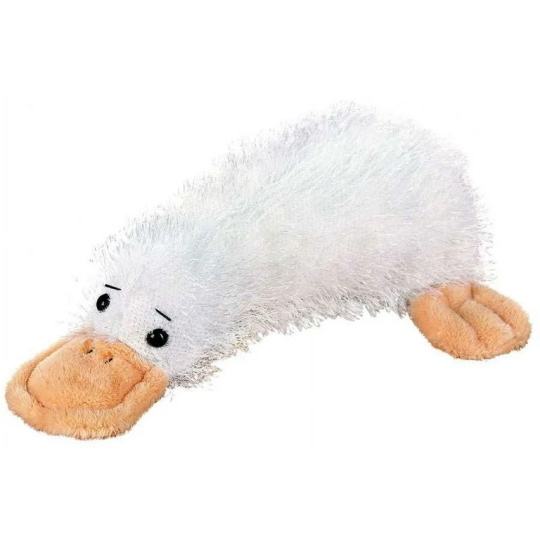
Name: Googles
Debut: Webkinz
What a cute silly plush duck! Right? WRONG! Goose? INCORRECT! This is no duck. This is no goose. This is no animal we have in our world. This is a Googles, and you have never seen anything like it!
Webkinz, as you likely know, is one of those 2000s Virtual Pet Worlds, with the gimmick of buying a real plush animal that would allow you to play with that animal in the game. And I mean animal! For the most part these are all actual animals, or at least variants of them, like a dog with a watermelon color scheme, or a lion with a flower petal mane. There are also some mythical creatures like dragons, which, yeah, it makes sense. Of course kids would want to have one of those as a virtual pet!
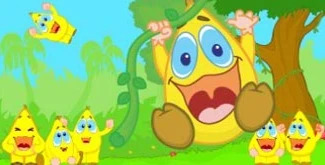
Then there are the Zingoz, original little monster guys who get whacked with bats by bigger monster guys. I guess they're a little weird considering the setting, but "shape with face and limbs" is not on its own Weird. I have no feelings on Zingoz.
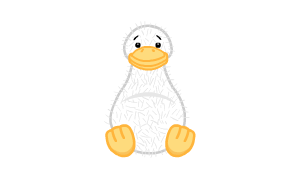
It is Googles that fascinates me so much! All of these real animals, some fantasy creatures, a few minor goofy monsters, and yet, there is Googles. They have ducks and geese in the game. This is not one of them. It is the mundanity of Googles that fascinates me so! Of all the things to be an original trademark species, they decided on a Kind Of Different Duck, and I delight in that.
But there IS a reason for Googles! A point of origin! It would have been FUNNIER if there wasn't, but it's ok. It still is nice and makes me smile.
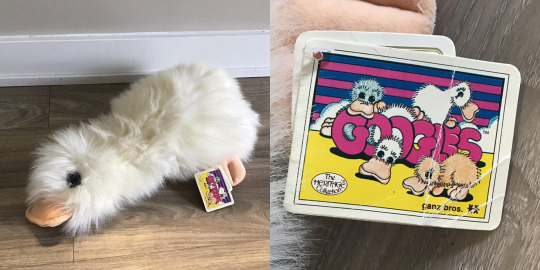
In the 1980s, GANZ, the company that would go on to make Webkinz, released a series of funny little flat plushes, including this ducky one! And that name on the tag... that's Googles! From what I can tell, this whole series was known as Googles, and included other species, like dogs and walruses, but these duck-billed bowling pins were the most popular.
So for Webkinz, they decided to revive one of their old, beloved plush creatures, bringing Googles to new generations while not telling them about its origins, making this silly fowl a strange, mundane mystery! And THAT is all you need to know about the taxonomy of Googles.
youtube
At least, that's what I thought until I found out about this official animated music video for babies, that repeatedly refers to an individual Googles as a PLATYPUS. Platypus?! Where's the TAIL? That's one of the most important features to represent! Their bills certainly are broad, but I assumed it was just a stylization thing. And if platypus, where are their forelegs?
I do not accept this answer. I do not think I will ever find a satisfactory conclusion. I admit defeat, Webkinz Animated Music Video From 2010. You have bested me.
322 notes
·
View notes
Text
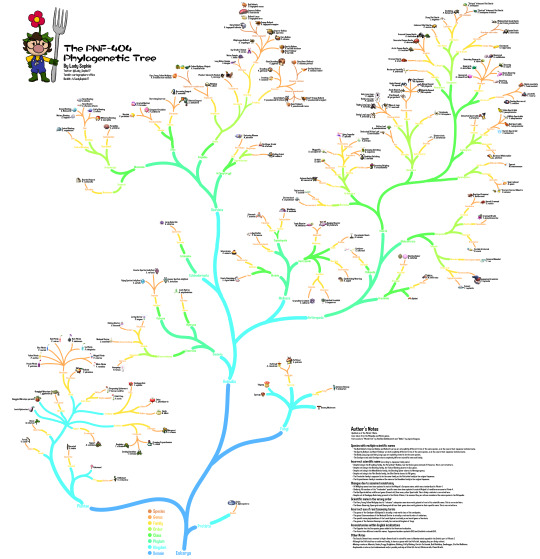
The PNF-404 Phylogenetic Tree
A bit of a different post from the usual, as I have been very hyped for Pikmin 4! Here's my speculative phylogenetic tree for most of the creatures in the Pikmin series. It is a bit more cautious than an actual phylogenetic tree, so there are a lot of soft polytomies (ideally every branch split should only have two children), but I digress.
Edit
It seems that Tumblr's compression did some nasty work on my post, so I'm gonna leave here a link to my phylogenetic tree in case anyone would like to see it in its full glory.
Here are also all the notes on the image in case anyone needs those too:
Author's Notes
Updated as of the Pikmin 4 Demo.
Icons taken from the Pikipedia and Pikmin games.
Fonts used are “Pikmin Font” by TheAdorableOshawott and “Dimbo” by Jayvee Enaguas.
Species with multiple scientific names
The Red Bulborb, Empress Bulblax and Bulborb Larvae are all explicitly different forms of the same species, as is the case in their Japanese technical name.
The Spotty Bulbear and Dwarf Bulbear are both explicitly different forms of the same species, as is the case in their Japanese technical name.
The Baldy Long Legs and Hairy Long Legs are explicitly stated to be the same species.
The Centipare and adult Centipare have completely different scientific name and family.
Incorrect scientific name (according to Japanese family name)
Despite being in the Breadbug family, the Fiery Dwarf Bulblax, has the Oculus genus instead of Pansarus. This is corrected here.
Despite not being in the Blowhog family, the Tusked Blowhog shares its Sus genus.
Despite not being in the Mandiblards family, the Shooting Spiner shares its Himeagea genus.
Despite not being in the Flint Beetle family, the Glint Beetle shares its Pilli genus.
The Floaterbie family is supposed to be the same family as the Flutterbie family in the original Japanese.
The Crysanthemum family is considered the same as the Dandelion family in the original Japanese.
Changes due to assumed consistency
All Wollyhop names have been updated to match the Wolpole's European name, which was standardized in Pikmin 4.
Similarly, All mentions of the “frodendum" specific name have been updated to match Wolpole's frondiferorum name in Pikmin 4.
The Red Spectralid has a different genus (Fenestrati) than every other Spectralid. This is likely a mistake is corrected here.
Despite not all Candypop Buds being present in the Pikmin 4 Demo, it is assumed they are all now considered the same species in the Piklopedia.
Scientific name in the wrong order
The Fiery Young Yellow Wollyhop has its “volcanus" subspecies name incorrectly placed in front of its scientific name. This is corrected here.
The Queen Shearwig, Speargrub and Sheargrub all have their genus incorrectly placed as their specific name. This is corrected here.
Incorrect use of real taxonomy terms
The genus Chilopoda of the Centipare is actually the real world class of the centipedes.
The genus Stauromedusae of the Medusal Slurker is actually a real world order of cnidarians.
The specific name phytohabitans of the Leech Hydroe is actually a real world genus of bacteria.
The genus of the Common Glowcap is actually the real world kingdom of fungi.
Inconsistencies within English localizations
The Coppeler has the Scarpanica genus added in the American localization.
The Armurk has different scientific names: Tegoparastacoidea reptantia (US) and Scalobita rotunda (EU).
Other Notes
The Caustic Dweevil was renamed to Hydro Dweevil and its scientific name to Mandarachnia aquadis in the Switch port of Pikmin 2.
Although the Puffstool has no confirmed family, it shares a genus with the Puffstalk, implying they are likely related.
Missing creatures: Mamuta, Smoky Progg, Blubbug, Puffy Blubbug, Electric Cottonade, Red Blubblimp, Seedbagger, Stuffed Bellbloom.
Unplaceable creatures (extradimensional and/or possibly entirely artificial life forms): Waterwraith, Plasm Wraith.
245 notes
·
View notes
Text
(Species Dysphoria refers to the feeling that your physical anatomy/taxonomic species is wrong in some way, or that it almost literally doesn't belong to you. As for physical vs. mental, physical would be more that your body feels physically incorrect or difficult to fit/control, and mental would be more that your form is consciously miserable, or struggling to connect yourself to that body.)
Note: If you experience it and would like to add, what species/Taxonomy do you feel you should belong to, and does it feel more physical, mental, or even both, in a way? I'm struggling with a lot of this myself and would love to hear other's stories, maybe come and share my own.
-submit your poll!-
#poll#polls#thanks anon!#submitted November 12#anonymous#submitted by anonymous#anonpolls#poll blog#tumblr polls#random polls
15 notes
·
View notes
Text
being a pedant has its downsides because every time someone tags one of my timkon or yj posts as "#batfam" in my notifs i do twitch a little. thats not their group name thats a different group of people. there is precisely one (1) character that overlaps here. this is incorrect taxonomy
#rimi talks#hypothetically id feel this way if someone tagged said posts with superfam or flashfam or wonderfam too#but nobody does that. anyone tagging superfam flashfam or wonderfam is tagging All of them if anything 😭#like. does it technically affect me? no. do i still stare at my activity page and frown about it? yes#incorrect classification!!!! this is not their taxonomical clade!!!!#like obviously you can't do full phylogenetic style actual mapping of characters bc theres multiple groups any given character belongs to#but let me have this. its about classification okay
38 notes
·
View notes
Text
i am unamused that my botany teacher was some kind of rebel holdout for obsolete taxonomy so she taught about families and genera that straight up no longer exist and havent for 15 years since the advent of genomic taxonomy. i am continually unlearning incorrect information. like US native asters were all moved from genus Aster to genus Symphyotrichum. Genus Prunus (cherries figs and such) are not in family Prunaceae (obsolete) but in Rosaceae. Goosefoot is in Amaranthaceae and not Chenopodiaceae. what was her angle
8 notes
·
View notes
Note
The physical realm vibrates along Ley Lines at a frequency typically between 252 and 288 Septoseraphs. It is only within this range that Action stabilizes long enough to form Being.
Although it is often claimed the earth is flat, this is in fact incorrect. It is more accurate to describe it as a plane with a single wave rotating around its central point (Axis Mundi, located in the Internationalized Eden Mandate). Currently, the wave’s crest is located in earth’s south and its trough in earth’s north. However, it is believed these will switch within the next 3 000 years. It is hypothesized the extremities of overlap with heavenly and chthonic frequencies, respectively.
In 1927 Bharati physicist Nagar Juna developed the Dependant Origination Principal, which theorized a bipolar force intersecting Thought and Action known as the Subject-Object Interactive Force (SOIF), thus stabilizing Being. It is now widely believed the Great Deluge Extinction was a result of the physical realm undergoing partial decay through the SOIF. As a result, it split into two intersecting planes: our earth and the Otherworld.
The Otherworld’s wave moves at a ninety degree angle to ours, therefore its crest is currently found in our west and its trough in our east. In the west, Yáahl’s Falls ushers the waters of the trans-dimensional ocean into the Western Sea and in the east Kanaloa’s Falls ushers these same waters out of the Eastern Sea.
The taxonomy regarding the many peoples native to the Otherworld is complicated, as it rests upon their own genealogies as well as the displacement between their reality and our own. For example, an alterhominid (term for Otherworld humanoid natives) peoples colloquially termed “Ogres” survive in small bands across the largely uninhabited militarized zones between the Roman Republic and the A.O.M`(Aesir-Occupied Midgard). Ogres are notorious for their excessive cruelty shown towards humans, as well as reports of substantial anthropophagy. All of these traits, however, should place them within a similar taxa to the Yaoguai or Oni, but the geographical distance between these groups proves problematic.
Currently, two theories are proposed to explain this: one, known as the Alterhominid Migration Hypothesis, argues that alterhominids such as Ogres may be able to travel far distances in reference to our earth while remaining stationary within their own. Another common theory purports that the simple relationship between the two stable earths as theorized by the Dependant Origination Principal is in fact much more complex in reality and “fluctuation zones” exist, wherein the difference in Ley Line frequency is radically different in isolated pockets than their surrounding regions. Further experiments must be done in order to determine if either of these hypotheses are correct.
Lastly, it must be acknowledged it is now believed by the majority of Otherworld specialists that the tendency for certain alterhominids to exhibit inherently violent behaviours is not cultural or biological, but is an unfortunate result of greater Ley Line displacement. A greater displacement results in an inability from those within lower frequencies from seeing their fellow hominids as sentient, let alone sapient. Ogres, Yaoguai, Oni and other dangerous alterhominids are likely ordinary human cultures who perceive their destruction upon us as no more serious as we perceive deforestation and extraction of natural resources. Despite this fact, little international effort has been put towards curtailing our own impact towards higher frequency alterhominids and disinformation campaigns denying alterhominid-human coexistence viability is still common.
Prettt good micro fiction however I worry this is racists anon attempt to get me replying to their asks again now that I just delete them. In which case...success I guess?
5 notes
·
View notes
Note
// replying to the tags abt moves n stuff, can you like. elaborate on that hc? im trying to wrap my brain around “types are a purely descriptive classification system that the academic community generally agrees is incorrect”.
//Ok, so, you know how scientific classification of species has the various levels of clade/taxon? And they occasionally get reshuffled based on new discoveries?
//It's similar with types in Astra's universe. And in stages similar to when it was based off of taxonomy instead of cladiatics. They're being forced to group things off of observed impact and effects of/on attacks and similar instead of a clean system. "These two animals are in the same genus because their skeletons look similar" kinda deal
//It's similar with abilities.
//The easy to understand smoking gun proving they're incorrect is Salazzle. The ability arbitrarily letting them poison steel types is a hastily made bandaid to try and jam them into the existing system.
//Science just flat out is in the middle of an academic slapfight trying to resolve this and propose a more coherent replacement. In the meantime the old system is still taught as it's "good enough" for everyday usage by trainers
5 notes
·
View notes
Note
omg that taxonomy post reminds me of my trip to the zoo a few weeks ago. we were looking at an African painted dog and this bozo next to us is telling his kid that they're hyenas. we were right next to the sign that said "AFRICAN PAINTED DOG" in big letters.
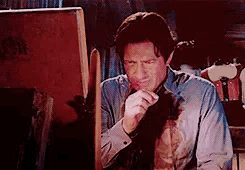
me trying to enjoy the exhibit but the person next to me is loudly proclaiming incorrect information and i am a miserable fun-hating scrooge
#AWDs are my FAVORITE canid too how could that kid do them so dirty#does her calico coat and white tail tip and slender jaws and lack of a dewclaw mean NOTHING to u???#also SOOOO jealous that your loval zoo has AWDs…#mine has some wonderful beasts but not those ones!
7 notes
·
View notes
Text
one of the most common problems with trying to categorize gender identities is the assumption that all people with different identities actually agree on what a 'gender' is
like if genders are supposed to be identities, can you really say that someone who believes that the reason she's a woman is because she has a female soul is the same identity as someone who believes that the reason she's a woman is because she aligns herself socially with the construct of womanhood?
as a matter of fact, womanhood is a construct and both of these individuals have the commonality of aligning themselves with it. but in terms of their identities, I would not say that their gender plays the same part in their understanding of self. leaving out differing frameworks of gender, even incorrect and unhelpful frameworks, does a disservice to representing the kinds of identities that people actually hold, if your goal is to represent gender identities.
realizing now that im missing the point. anyone attempting to categorize gender identities is typically doing so for the purpose of creating labels that people choose for themselves, not to create a taxonomy of people's experiences from a bird's eye view.
whether or not people view gender as socially constructed is in fact an important part of the social construct, and therefore an important part of making sense of the world
2 notes
·
View notes
Text
if I hear that girls enjoy sim or hyper casual games ever again smh
I’m currently reading a book on narrative design in games. There’re some thoughts on player classifications (mentioning both Bartle’s taxonomy and Jesse Schell’s ideas). I do understand that those are just theoretical concepts that were created solely for game developers. And slightly outdated too.
But I can’t just ignore it anymore. Again, these ideas are not a call to action but rather a reference. But I’m curious whether real developers really stick to any of this stuff.
I mean Pac-Man was developed to attract teenage girls. It’s ‘kawaii’ and doesn’t involve any violence. It was extremely popular. And it was developed like in 70s.
So isn’t Pac-Man a 40 year old proof of the fact that girls presumably don’t play games because they are, in fact, all made for boys? Hear me out there: girls and boys may enjoy different stuff BUT most of the games are made exclusively for boys (at least having them in mind as a key audience). Thus, statement that girls don’t play games is incorrect from the very beginning. It’s just they are not heard or anyhow represented in the industry.
And I’m not even talking about gender socialization which obviously has the greatest impact on today’s situation.
Girls do play games. They are just excluded from gaming beforehand.
Id love to hear any ideas on it
13 notes
·
View notes